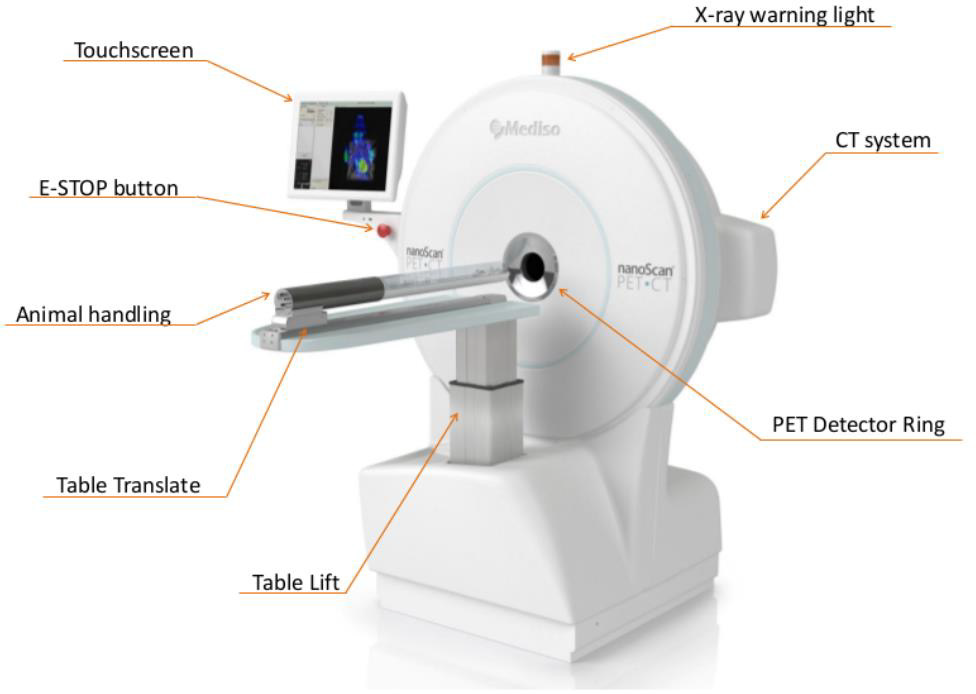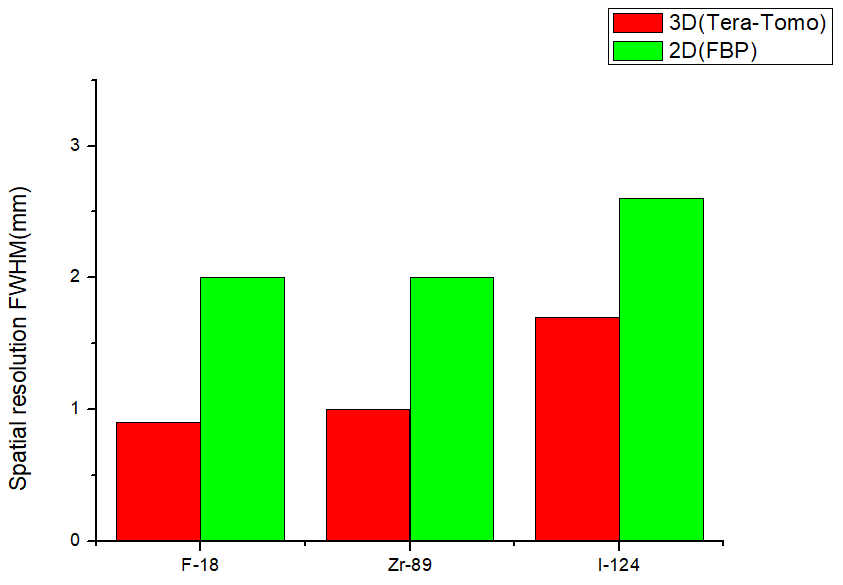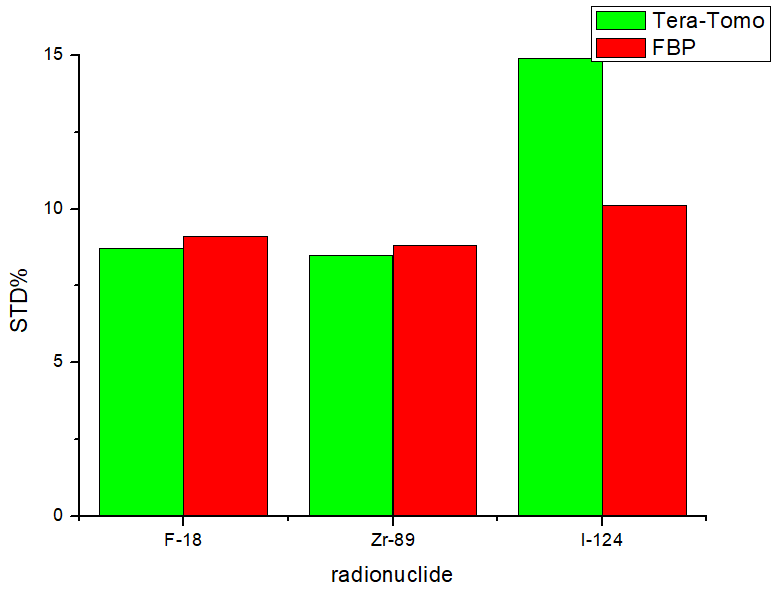Production, Reproduction, Metabolism, and Health of Heat-Stressed Purebred vs. Crossbred Holstein Cows
Introduction
Crossbreeding is the mating of individuals from different breeds. A foundational aim of crossbreeding is to utilize desirable traits from two or more different breeds. Another goal of crossbreeding would be to take the advantage of heterosis Falconer, et al. [1]. Crossbreeding has received interest from dairy producers over the past 20 years. Heins, et al. [2] reported that more than 95% of the US dairy cattle were purebred Holstein. Because of the superiority of Holstein cows in terms of milk production, it has become the dominant dairy breed throughout the world over time. However, dairy producers have observed remarkable declines in fertility and survival and increased culling rates in purebred Holstein herds over the past few decades Norman, et al. [3]. One strategy to minimize heat stress effects on dairy cows is to selecet animals that are more resistant to heat stress. Heat stress is a major concern affecting milk production, reproduction, and health of dairy cows during hot and humid conditions Bernabucci, et al. [4]. The ambient Thermal- Humidity Index (THI) is a suitable measurement to express heat stress. Rectal temperature is a physiological parameter that could predict the severity of heat stress in dairy cows. It is believed that milk synthesis in mammary tissue begins to decline when the THI reaches 72 Bernabucci, et al. [4]. Recent data from the University of Arizona show that milk production in high milk-producing dairy cows starts to decrease at a THI of roughly 68. Cow becomes more sensitive to thermal stress as milk production increases Zimbelman, et al. [5]. Increasing milk production from 35 to 45 liters per cow per day increases sensitivity to heat stress and decreases the threshold temperature by 5 degrees celsius. Researchers reported that the THI two days earlier had the greatest effect on milk yield. Overall, therefore, dairy producers tend to cross pure Holstein heifers and cows with other breeds’ bull semen in an affort to reduce challenges and complications associated with heat stress.
Over the past decades, dual-purpose breeds (e.g., Montbelliard and Simmental) have been introduced to Iran and many other countries around the world to be crossed with purebred Holstein cows. To our knowledge, no study has compared purebred Holstein cows vs. crossbred Holstein×Montbeliarde and Holstein×Simmental cows under intensive dairy farm systems during hot and humid summer conditions. Crossbred lactating cows were hypothesized to outperform Holsteins in fertility and health traits under environmental stresses. The objective of this study was, therefore, to compare production, reproduction, metabolism, and health of purebred Holstein cows vs. crossbred Holstein×Montbeliarde and Holstein×Simmental cows under hot and humid conditions of northern Iran (Sari, Mazandaran).
Materials and Methods
Dairy crosses were produced by crossing Holstein (H) cows with Montbeliarde (from France) and Simmental (from Germany) bulls’ semen. The performance and health of 70 primiparous cows from each breed (210 cows in total) were compared during their first lactation. This experiment was conducted at Mahdasht Dairy Facilities of Dasht-e-Naz Co., in Sari (Mazandaran, Iran). The experimental heifers’ parturition occurred approximately at 24 months of age. Calving and reproductive data including the first and last insemination date, parturition date, and calving ease were recorded. As a result, traits such as days until first service, days open, insemination times, and days between the first and last service were obtained. The success for the first service was recorded as 0 being no success and 1 being success. Calving ease or difficulty (or calving status) was categorized 1 to 5, with 1 being natural calving, 2 being calving with the assistance of one individual, 3 being calving with the assistance of two individuals and some damage to calf, 4 being calving with the assistance of several individuals and large damage to calf, and 5 being calving needing cesarian. The frequqncy of some categories (i.e., 4 and 5) was low. As a result, to prevent Extreme Category Problem (ECP) while analyzing the data, the categories 1, 2, and 3 were considered as calving with ease and the categories of 4 and 5 were considered as calving with difficulty.
Stillbirth was defined as calf death shortly before calving, while calving and/or 24-48h post-calving. Stillbirth was scored as either 0 (no stillbirth) or 1 (stillbirth). The entire calf and heifer production systems and conditions were the same for all three experimental genetic groups. To monitor metabolic parameters (glucose, BHBA, NEFA, calcium and magnesium), blood samples were collected from tail vein at 21 d prepartum, parturition, and 21 d postpartum. Blood was sampled from 15 cows from each group. Blood was let to coagulate to harvest serum after centrifuging at 2500rpm for 10min. Serum was stored at -20 degrees celsius until metabolites measurements in Mabna Laboratory (Karaj, Iran). Concurrent with blood sampling, body condition was scored using a same trained individual based on a 1 to 5 scoring system, with 1 being an emaciated cow and 5 representing an obese cow. Milk yield recording for individual cows started at 5 d postpartum and continued monthly until drying-off. Milk samples from individual cows were taken monthly and analyzed for milk composition including fat, protein, lactose, and Somatic Cell Count (SCC). Cow type scores were given by a trained individual using a 100-point scoring system. Cow type traits included udder traits (connection, length, and teat properties), body traits (dairy characteristics and strength), and legs and hooves properties. Since milk SCC did not have normal distributions, the Box-Cox algorhythm was utilized (SAS, Version 9.1) to convert SCC to Somatic Cell Scores (SCS).

By using the Box-Cox algorhythm, 𝛌 value was determined in a way to normalize data distribution. The 𝛌 value for SCC conversion to SCS was calculated to be -0.25. Data for milk production, reproduction, blood metabolites, and BCS as well as SCS were analyzed by using the Mixed Model of SAS program SAS [6] with fixed and random effects. Fixed effects incuded breed (i.e., genetic group), calving season, bleeding month, parity, time, and interactions, plus calving age as covariate. Randon effects included cow within breed (i.e., group) and residuals. For the analysis of health data and the first service success, LOGISTIC procedures were utilized. The effects included calving season, calving age, the first month of service, calf gender, calf age, pregnancy length, service season, calving ease and parity.
Heat tolerance at the hottest time of day in summer was determined by measuring rectal temperature. Fiftheen cows were randomly selected from each genetic group and rectal temperature was determined weekly during summer months at 1400h by using a digital thermometer. To measure and record rectal temperature, the thermometer was inserted and kept in rectum for 60 seconds. The ambient minimum, maximum, and average THI were calculated by using the following formula (6):

Uterus infections (metritis), mammary infections (mastitis), laminitis, lameness and other diseases were diagnosed and recorded by an experienced veterinarian. A case was diagnosed as metritis if a cow would have a rectal temperature of > 39.5 degrees celsius with watery, mucosal, and bad-smelling secretions from reproductive tracts for 14 days postpartum. Lamaness severity was given visually a score of 1 to 5, with the score of 5 being an overly lame cow. A case was diagnosed as retained placenta (RT) if fecal membranes were not expelled within 24h postpartum.
Results and Discussion
The THI data for Mahdasht dairy farm are presented in Table 1. The data clearly showed that maximam summer THI was considerably greater than the range (i.e, 68-72) when heat stress begins to occur. In other words, cows were suffering from severe heat stress during summer months. However, cows were not facing heat stress during winter (Table 1).
Table 1: Maximum, minimum, and mean temperature-humidity index (THI) of the dairy farm in summer and winter.
Reproductive Traits and Indices
Least square means for reproductive traits of the purebred Holstein and crossbreed cows are presented in Table 2. The effect of breed (genetic group) on days until first service, service numbers for each pregnancy, days open, the first service success, and the interval between the first and last services was not significant (P > 0.05). Similar to the current study, days until first service were not different between puredbred Holstein cows and crossbred Holstein×Ayrshire cows Vesley, et al. [7]. In another study Touchberry [8], the days open for crossbred Holstein×Guernsey cows were 3 days longer, when compared to purebred cows. However, significant effects of genotype on cow pregnancyrelated traits have been reported. For instance, pregnancy rate was greater for Holstein×Montbeliarde and Holstein×Simmental compared to purebred Holsteins Heins, et al. [8-10]. In addition, crossbred cows had shorter days open than did purebred Holsteins Hazel, et al. [10,11]. Possible reasons for such positive impacts of crossbreeding on cow pregnancy could be heterosis and interbreed complementary properties as well as lower dystocia and stillbirth, and the greater BCS of the crossbred cows.
Milk Production
The data for milk production including least square means and standard errors were shown in Table 3. Production of milk and milk fat and protein in the entire lactation (305 days) were not statistically different among the three genotypes (P > 0.05). These findings were in agreement with other reports Hazel, et al. [2,11]. One reason that may decrease dairy farmers’ interest towards crossbreeding is the likelihood of decresed milk production by crossbreeding. As such, milk production in the entire 305 days of lactation was numerically greater for the purebred Holstein cows than for the cross-bred cows. However, this difference was not statistically significant that is thought-provoking in light of the reasonably adequate sample size of the current experiment. In a study by Heins, et al. [2], yields of milk fat and protein were greater for purebred Holsteins than for crossbred cows. However, in another study Dechow, et al. [12]. Holstein×Brown Swiss crossbred cows produced more milk fat and milk protein over 5 lactations than did purebred Holsteins. This was the case in another crossbreeding study during the first lactation Swalve [13]. The reason for these findings was reported to be heterosis. In contrast, in a recent study by Shonka-Martin, et al. [14], crossbred cows had lower milk volume than did purebred Holstein cows while milk fat and protein production was not different. The lack of any differences in milk production between genetic groups in the present study revealed that crossbred cows did not outperform purebred Holstein cows.
Table 2: Reproductive indices of the purebred Holstein vs. crossbred Holstein × Montbeliarde and Holstein× Simmental cows during their first lactation.
Table 3: Milk and milk fat and protein production of the purebred Holstein vs. crossbred Holstein × Montbeliarde and Holstein× Simmental cows during their first lactation.
Health Traits and Indices
Health related traits and indices are presented in Table 4. Genotype effect on stillbirth, retained placenta, sole heamorrhage, and mastitis were not significant (P > 0.05). Dystocia tended to occur more frequently in the Holstein×Montbeliarde cows than in the purebred Holstein cows (P < 0.10). Also, metritis frequency was greater in the crossbred cows than in the purebred Holstein cows (P < 0.05). In another study, however, the first-parity purebred Holstein cows had more stillbirth (14 vs. 6.2%) and dystocia (17 vs. 7.2%) than did crossbred Holstein×Montbeliarde cows Heins, et al. [15]. Others Vesely, et al. [7] also reported that stillbirth rate was greater in purebred Holsteins than in crossbred cows, possibly because of heterosis and improved cow health through crossbreeding. In an investigation by Mendonça, et al. [16], immune response was greater, and thus, post-calving disease incidence was lower (35 vs. 57%) for crossbred Holstein×Montbeliarde cows than for purebred Holstein cows. The inter-study differences in health responses to crossbreeding could at least partially be attributed to different environmental conditions. Notably, in the current study, cows were exposed to stressful (hot and humid) environments, which may have affected cow responses to crossbreeding. Overall, in the present study, crossbreeding did not offer any advantages over purebreeding from health perspectives. Even, crossbreeding compromised cow health in some aspects, as discussed above.
BCS and Blood Metabolites
Least square means for selected blood metabolites, rectal temperature, and BCS for the purebred and crossbred cows are shown in Table 5. The BCS during the transition period was significantly greater (P < 0.05) for the crossbred cows than for the purebred cows. Probably, as a result, the crossbred Holstein×Montbeliarde cows experienced increased dystocia and metritis, when compared to the purebred Holstein cows (Table 4). Likewise, other studies have also reported greater BCS for crossbred cows than for purebred Holsteins Bjelland, et al. [8,11,17]. For instance, in a study by Hazel, et al. [11], the BCS was 3.36 for Holstein×Montbeliarde cows and 2.87 for purebred Holsteins. These BCS results suggest that energy partitioning is at least in part dependent upon genetics Veerkamp, et al. [18]. The lower BCS of the purebred Holstein cows was likely because of genetic selection for milk production and dairy charactertics. Blood concentrations of glucose, NEFA, BHBA, calcium and magnesium were not statistically different among genetic groups (P > 0.05; Table 5). These results were in agreement with other findings Heins, et al. [2], suggesting that energy status was probably not different between the crossbred cows and purebred Holstein cows. Rectal temperature measured during summer and at hottest time of the 24-h periods was similar among the genetic groups (P > 0.05). This similarity suggests that the purebred Holstein cows were not different than the crossbred cows in resistance to stressful ambient conditions.
Table 4: Health issues in the crossbred groups and the purebred Holstein cows.
Note: abMeans with different superscripts within each row are statistically different (P < 0.05)
Table 5: Least square means of blood metabolites for the purebred Holstein, and the crossbred Holstein × Montbeliarde and Holstein× Simmental cows.
Note: abMeans with different superscripts within each row are statistically different (P < 0.05).
Body and Type Traits
Least square means and standard errors for type traits for the crossbred and purebred Holstein cows are presented in Table 6. The results showed that udder-related traits were more favorable (P < 0.05) for the purebred Holstein cows than for the crossbred cows. As such, dairy characteristics were more pronounced in the purebred Holstein cows than in the crossbred cows. Teat length was, however, similar (P > 0.05) among the genetic groups (Table 6), confirming some of other reports Hazel, et al. [11]. Similar to the current study, front and read teats positions were wider in Holstein cows than in crossbred cows. This was probably because of genetic selection for dairy teat properties in purebred Holstein cows Heins, et al. [19]. Previous studies have also shown that purebred Holstein cows were taller than crossbred cows Bjelland, et al. [17]. Genetic selection for dairy properties over the last few decades has led purebred Holstein cows to have high-merit performance Hansen [20]. Udder width and dairy charactertics have intermediate genetic correlation with milk production traits, such that high-producing heifers possess wider udders and more pronounced dairy properties, when compared to low-producing peers Hazel, et al. [11]. Leg angle was sharper (P < 0.05) in the cross-bred cows than in the purebred Holstein cows (Table 6), which was in agreement with the literature Hazel, et al. [11]. One of the advantages of crossbreeding is the improvement of body strength Häggman, et al. [21]. As such, body strength was improved by crossbreeding in the present study (P < 0.05, Table 6) [22-26].
Table 6: Least square means for linear type traits of the purebred Holstein cows and crossbred cows.
Note: 1Traits listed in this table were scored on a 100-basis scoring system.
abMeans with different superscripts within each row are statistically different (P < 0.05).
Conclusion
The findings of this study confirmed that crossbreeding Holstein cows with Montbeliarde and Simmental bulls’ semen did not improve production, reproduction, health, and metabolism under stressful hot and humid conditions of northern Iran. The Holstein×Montbeliarde and Holstein×Simmental crosses experienced more dystocia and lameness, respectively, compared to the purebred Holstein cows. The crossbred cows suffered more from metritis, when compared to the purebred Holsteins. Therefore, the results suggested that crossbred cows would not be suitable replacements for purebred Holstein cows under stressful hot and humid conditions.
For more Articles on: https://biomedres01.blogspot.com/










 = 0.55, nongaussian profiles with extended tails are characterized by smaller FWHM-to-FWTM ratios [2]. Palmer, et al [9] and Disselhorst, et al [2] have measured spatial resolution and determined the corresponding FWHM to FWTM ratios, and they have showed that
= 0.55, nongaussian profiles with extended tails are characterized by smaller FWHM-to-FWTM ratios [2]. Palmer, et al [9] and Disselhorst, et al [2] have measured spatial resolution and determined the corresponding FWHM to FWTM ratios, and they have showed that 





